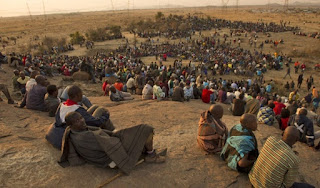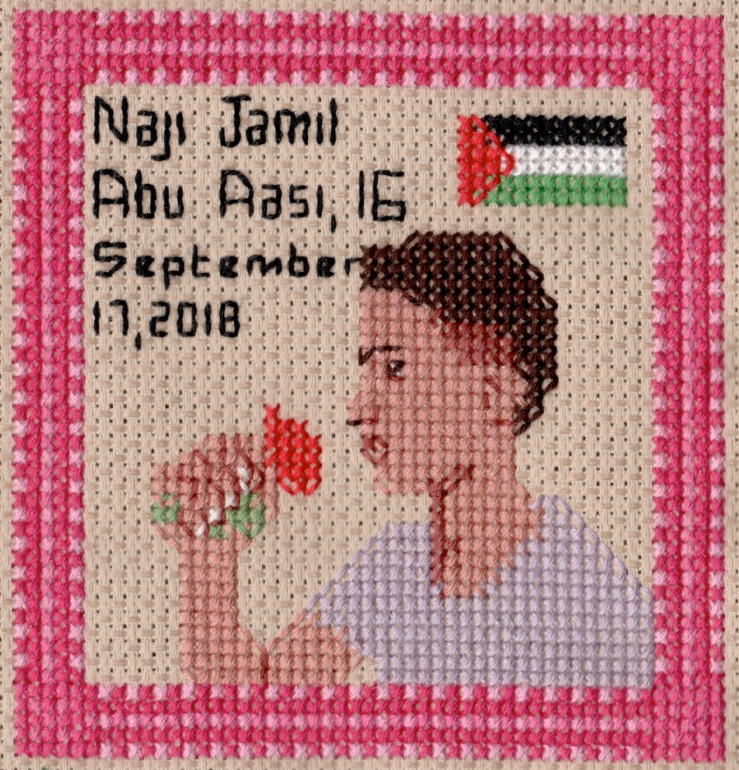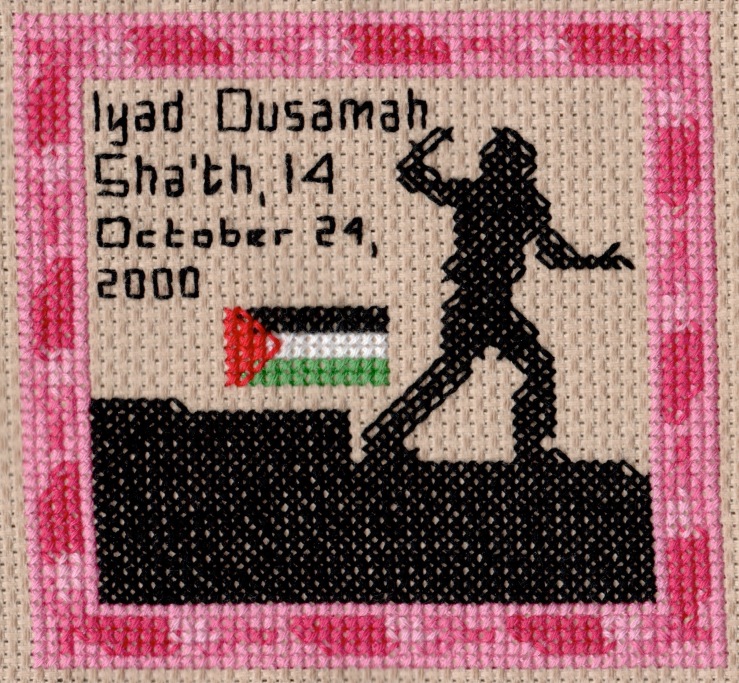From CounterPunch: 21 August 2019
by Binoy Kampmark

Drawing by Nathaniel St. Clair
It was predictably ugly: in tone, in regret, and, in some ways,
disgust. Australia emerged from the Pacific Islands Forum Leaders
Meeting isolated, the true spoiler of the party which saw 17 states
facing the obstinacy of one. It had taken place on Tuvalu, some two
hours flight north of Fiji. The capital Funafuti is located on vanishing
land; the island state is facing coastal erosion, the pressing issue of
salinity, the very crisis of its existence.
Pacific Island leaders were already wise to the accounting cosmetics
of Canberra’s accountants prior to the Forum. It reeked, for instance,
of a gesture for permissive pollution to the tune of $500 million: we
give you money to boost “resilience” and sandbag your countries against
rising water levels; we will keep polluting and emitting with expanded
fossil fuel projects because that is what we are good at.
Alex Hawke, Australia’s Minister for International Development and the Pacific,
called
the cash promise the “most amount of money Australia has ever spent on
climate in the Pacific”. As Tuvalu Prime Minister Enele Sopoaga
explained,
“No matter how much money you put on the table, it doesn’t give you the
excuse not to do the right thing.” That right thing was a reduction in
emissions, “including not opening your coal mines”.
The PIF leaders were also aware about what disruptive role Australia
was going to play. Australian politicians of the past and present have
done little to endear themselves to a forum they have only recently felt
more interest in because of China’s increasingly conspicuous presence.
In 2015, when Tony Abbott held the reins of power, his culturally
challenged immigration minister Peter Dutton, in conversation with the
prime minister,
quipped
rather darkly that “time doesn’t mean anything when you’re about to
have water lapping at your door.” The remark was a response to a meeting
on Syrian refugees which had been running late, or on “Cape York time”,
as he put it.
Ahead of the leaders’ forum, an
annotated draft
of the Pacific Islands Forum declaration revealed a sprinkling of
qualifications, repudiations and rejections on the part of the
Australian delegation. The comments from August 7 sought to restrict any
total decarbonisation, bans on the future use of coal power plants, opt
out clauses for the 1.5C limit in temperature rise, phasing out fossil
fuel subsidies and the very mention of the term climate change.
When it came to proceedings, Prime Minister Scott Morrison showed his
true garish colours: Australia was a small contributor to emissions; it
was a global problem, and so others had to do more. In short, the weak
excuse of any emission producing state. Besides, he kept trumpeting,
Australia was a leading investor in the sector of renewables.
Back in Australia, the Australian broadcaster and regular vulgarian
Alan Jones was busy attacking the leaders of the gathering, most notably
New Zealand prime minister Jacinda Ardern, who had suggested that
Australia “had to answer the Pacific” on the climate change issue. A
sock,
he suggested,
should have been strategically placed down her throat. He subsequently
suggested that this was a “wilful misrepresentation of what I said
obviously distract from the point that she was wrong about climate
change and wrong about Australia’s contribution to carbon dioxide
levels.”
Fiji’s Prime Minister Frank Bainimarama was sickeningly
unimpressed, having
expressed
open admiration for New Zealand’s efforts to combat climate change.
“Easy to tell someone to shove a sock down a throat when you’re sitting
in the comfort of a studio. The people of the Pacific, forced to abandon
their homes due to climate change, don’t have that luxury. Try saying
it to a Tuvaluan child pleading for help.”
Michael McCormack, Australia’s Deputy Prime Minister, added the most revealing touch on Australia’s position at the PIF during
a revealing business function in the rural town of Wagga Wagga on Friday. (McCormack, it should be noted,
is on record as disputing evidence of an increase in global temperatures.) With an address heavy with bruising paternalism, he
thought
the PIF leaders were bellyaching, needlessly lamenting their fate. He
admitted “getting a bit annoyed when we have people in those sorts of
countries pointing the finger at Australia and saying we should be
shutting down all our resources sector so that, you know, they will
continue to survive.” He had little doubt they would continue to do so,
due to the “large aid assistance from Australia” and “because their
workers come here and pick our fruit, pick our fruit grown with hard
Australian enterprise and endeavour and we welcome them and we always
will.” The only think lacking in the statement was a Boris
Johnson-styled garnish: a reference to cannibalism, or the toothy water
melon smiles.
A neat summary of the entire encounter between the Pacific Island
leaders and Australia was provided by Tuvalu’s Sopoaga. “You [Scott
Morrison] are concerned about saving your economy in Australia… I am
concerned about saving my people in Tuvalu.”
The final communique proved lukewarm and non-committal, a feeble
reiteration of existing understandings that climate change was a serious
matter. Bainimarama supplied an acid
opinion
on the final text. “We came together in a nation that risks
disappearing to the seas, but unfortunately, we settled for the status
quo of our communique. Watered-down climate language has real
consequences – like water-logged homes, schools, communities, and
ancestral burial grounds.” Sopoaga was even more dramatic in
assessing
the response to the weakened language of the communique. “There were
serious arguments and even shouting, crying, leaders were shedding
tears.”
Sadly, the main Australian opposition party would not have done much
better. Efforts on the part of Senator Penny Wong to claim a drastically
different Labor approach must be put to rest. This is a party torn on
the subject of King Coal, energy costs and renewables.
The hysterical aspect to PIF is that Australia’s denuding
contribution will only serve to damage its own interests. In the
short-term, Chinese diplomats will be delighted by the self-sabotaging
efforts of the Morrison government. Beijing’s Special Envoy to the
Pacific, Ambassador Wang Xuefeng, was on hand to
tell the forum
that “no matter how the international situation evolves, China will
always be a good friend, partner and brother of Pacific Island
Countries.” Expect a surge of interest towards the PRC in the
forthcoming months.
A longer term consequence is also impossible to ignore. Fine to joke
about having refugee islanders pick the fruit of your country, but to do
so requires places to grow fruit. Rising sea levels may will cause the
dreaded vanishing of the island states, but it will also submerge a good
deal of Australia’s precariously placed coastal cities. What a bitter,
if not deserved outcome that would be.
Dr. Binoy Kampmark was a Commonwealth Scholar at Selwyn College, Cambridge. He lectures at RMIT University, Melbourne. Email:
bkampmark@gmail.com
Binoy Kampmark was a Commonwealth Scholar at Selwyn College, Cambridge. He lectures at RMIT University, Melbourne. Email: bkampmark@gmail.com
by Binoy Kampmark

Drawing by Nathaniel St. Clair
It was predictably ugly: in tone, in regret, and, in some ways,
disgust. Australia emerged from the Pacific Islands Forum Leaders
Meeting isolated, the true spoiler of the party which saw 17 states
facing the obstinacy of one. It had taken place on Tuvalu, some two
hours flight north of Fiji. The capital Funafuti is located on vanishing
land; the island state is facing coastal erosion, the pressing issue of
salinity, the very crisis of its existence.
Pacific Island leaders were already wise to the accounting cosmetics
of Canberra’s accountants prior to the Forum. It reeked, for instance,
of a gesture for permissive pollution to the tune of $500 million: we
give you money to boost “resilience” and sandbag your countries against
rising water levels; we will keep polluting and emitting with expanded
fossil fuel projects because that is what we are good at.
Alex Hawke, Australia’s Minister for International Development and the Pacific,
called
the cash promise the “most amount of money Australia has ever spent on
climate in the Pacific”. As Tuvalu Prime Minister Enele Sopoaga
explained,
“No matter how much money you put on the table, it doesn’t give you the
excuse not to do the right thing.” That right thing was a reduction in
emissions, “including not opening your coal mines”.
The PIF leaders were also aware about what disruptive role Australia
was going to play. Australian politicians of the past and present have
done little to endear themselves to a forum they have only recently felt
more interest in because of China’s increasingly conspicuous presence.
In 2015, when Tony Abbott held the reins of power, his culturally
challenged immigration minister Peter Dutton, in conversation with the
prime minister,
quipped
rather darkly that “time doesn’t mean anything when you’re about to
have water lapping at your door.” The remark was a response to a meeting
on Syrian refugees which had been running late, or on “Cape York time”,
as he put it.
Ahead of the leaders’ forum, an
annotated draft
of the Pacific Islands Forum declaration revealed a sprinkling of
qualifications, repudiations and rejections on the part of the
Australian delegation. The comments from August 7 sought to restrict any
total decarbonisation, bans on the future use of coal power plants, opt
out clauses for the 1.5C limit in temperature rise, phasing out fossil
fuel subsidies and the very mention of the term climate change.
When it came to proceedings, Prime Minister Scott Morrison showed his
true garish colours: Australia was a small contributor to emissions; it
was a global problem, and so others had to do more. In short, the weak
excuse of any emission producing state. Besides, he kept trumpeting,
Australia was a leading investor in the sector of renewables.
Back in Australia, the Australian broadcaster and regular vulgarian
Alan Jones was busy attacking the leaders of the gathering, most notably
New Zealand prime minister Jacinda Ardern, who had suggested that
Australia “had to answer the Pacific” on the climate change issue. A
sock,
he suggested,
should have been strategically placed down her throat. He subsequently
suggested that this was a “wilful misrepresentation of what I said
obviously distract from the point that she was wrong about climate
change and wrong about Australia’s contribution to carbon dioxide
levels.”
Fiji’s Prime Minister Frank Bainimarama was sickeningly
unimpressed, having
expressed
open admiration for New Zealand’s efforts to combat climate change.
“Easy to tell someone to shove a sock down a throat when you’re sitting
in the comfort of a studio. The people of the Pacific, forced to abandon
their homes due to climate change, don’t have that luxury. Try saying
it to a Tuvaluan child pleading for help.”
Michael McCormack, Australia’s Deputy Prime Minister, added the most revealing touch on Australia’s position at the PIF during
a revealing business function in the rural town of Wagga Wagga on Friday. (McCormack, it should be noted,
is on record as disputing evidence of an increase in global temperatures.) With an address heavy with bruising paternalism, he
thought
the PIF leaders were bellyaching, needlessly lamenting their fate. He
admitted “getting a bit annoyed when we have people in those sorts of
countries pointing the finger at Australia and saying we should be
shutting down all our resources sector so that, you know, they will
continue to survive.” He had little doubt they would continue to do so,
due to the “large aid assistance from Australia” and “because their
workers come here and pick our fruit, pick our fruit grown with hard
Australian enterprise and endeavour and we welcome them and we always
will.” The only think lacking in the statement was a Boris
Johnson-styled garnish: a reference to cannibalism, or the toothy water
melon smiles.
A neat summary of the entire encounter between the Pacific Island
leaders and Australia was provided by Tuvalu’s Sopoaga. “You [Scott
Morrison] are concerned about saving your economy in Australia… I am
concerned about saving my people in Tuvalu.”
The final communique proved lukewarm and non-committal, a feeble
reiteration of existing understandings that climate change was a serious
matter. Bainimarama supplied an acid
opinion
on the final text. “We came together in a nation that risks
disappearing to the seas, but unfortunately, we settled for the status
quo of our communique. Watered-down climate language has real
consequences – like water-logged homes, schools, communities, and
ancestral burial grounds.” Sopoaga was even more dramatic in
assessing
the response to the weakened language of the communique. “There were
serious arguments and even shouting, crying, leaders were shedding
tears.”
Sadly, the main Australian opposition party would not have done much
better. Efforts on the part of Senator Penny Wong to claim a drastically
different Labor approach must be put to rest. This is a party torn on
the subject of King Coal, energy costs and renewables.
The hysterical aspect to PIF is that Australia’s denuding
contribution will only serve to damage its own interests. In the
short-term, Chinese diplomats will be delighted by the self-sabotaging
efforts of the Morrison government. Beijing’s Special Envoy to the
Pacific, Ambassador Wang Xuefeng, was on hand to
tell the forum
that “no matter how the international situation evolves, China will
always be a good friend, partner and brother of Pacific Island
Countries.” Expect a surge of interest towards the PRC in the
forthcoming months.
A longer term consequence is also impossible to ignore. Fine to joke
about having refugee islanders pick the fruit of your country, but to do
so requires places to grow fruit. Rising sea levels may will cause the
dreaded vanishing of the island states, but it will also submerge a good
deal of Australia’s precariously placed coastal cities. What a bitter,
if not deserved outcome that would be.
Dr. Binoy Kampmark was a Commonwealth Scholar at Selwyn College, Cambridge. He lectures at RMIT University, Melbourne. Email:
bkampmark@gmail.com
Binoy Kampmark was a Commonwealth Scholar at Selwyn College, Cambridge. He lectures at RMIT University, Melbourne. Email: bkampmark@gmail.com



































